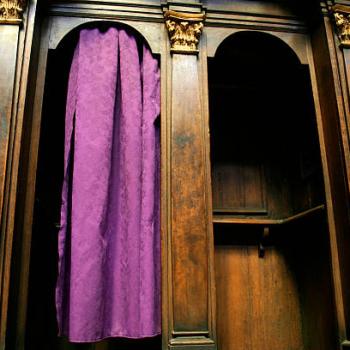
This Christmas, Angelina Jolie’s much-hyped adaptation of the best-selling biography Unbroken made it to the big screen. Most of you probably know the story: It traces the remarkable journey of WWII hero Louis Zamperini, as he became a pre-war Olympic athlete, only to be drafted as a pilot and have his plane shot down, only to be captured by the Japanese and tortured in a prison camp. But amazingly, his story didn’t end there, as he went on to have a crisis of faith while grappling with the demons of his war experiences. Through the preaching of Billy Graham, both he and his wife became Christians and launched missions initiatives of their own. Eventually, he met and forgave nearly all of his former Japanese captors face-to-face. Only the most infamously sadistic one, known as “The Bird,” refused to meet him.
Unfortunately, Zamperini’s entire post-war conversion story is relegated to a few title cards at the end of this movie, which ends abruptly with his release and family reunion. While the book on which it’s based doesn’t even go into as much detail as Louis himself in his own memoirs, at least it provides something for the reader. Run-time considerations no doubt played a role, but Hollywood’s aversion to anything openly religious isn’t exactly a secret. Allegedly, Louis himself was pleased with the final cut of the film. His son wrote a recent op-ed saying that the film’s non “preachy” nature was exactly what his dad would have wanted (the idea being that people would be motivated to learn “the rest of the story” for themselves precisely because it’s only hinted at in the film).
Interestingly enough, a number of secular critics disagree. They argue that the film feels hollow and incomplete without these details. By cutting out the messy, sometimes dark and ultimately redemptive arc of Zamperini’s post-war journey, Jolie elevates him to an almost saintly stature. Sure, he starts off as a rakish lad who seems like he could turn into a bit of a troublemaker before his brother inspires him to channel that energy more constructively. But ultimately, Louis can do no wrong. Louis is magnificent. Louis is perfect. And his prison trials are lingered over with Passion-like symbolism. By enshrining Zamperini in this way, Jolie overlooks the flawed man underneath. As a result, the movie misses the whole point of its own hero’s story.
The reality is that Louis Zamperini was a deeply messed-up guy when he came home from the war. And who wouldn’t be? You try getting tortured for several years straight, followed by trying to resume a normal life. Zamperini’s PTSD nightmares were so strong that he would wake up finding himself at his wife’s throat, thinking she was the tormentor of his dreams. Like with many war veterans, Zamperini’s coping mechanisms spiraled into addictions–smoking, drinking, even p*rnography. On top of everything else, his wife was trying to take care of their baby girl.
Eventually, she decided to end the marriage. That’s when she walked in on a Billy Graham crusade in downtown Los Angeles. The message convicted her. She came home and announced that she was no longer planning to divorce Louis, and she wanted him to come hear the preacher too. The neat little bow ending to the story would be that Louis took her advice and came down to the altar the first time he heard Mr. Graham speak. But human nature is more stubborn than that. The first time he accompanied his wife, he turned around and walked out of the tent, angrily telling her, “Don’t ever try to get me back to a place like this again!” She urged him to try again, desperately hoping that it would save their marriage. He eventually agreed, on one condition: “As soon as that fellow says ‘Every head bowed, every eye closed, I’m outta there.'”
Fortunately, God had other plans, and Graham’s well-chosen words pierced Zamperini’s shell the second time through. As Franklin Graham recounts it:
He went home that night, got rid of his p*rnography, he got rid of his alcohol, he threw his cigarettes away. And he found his Bible that was given to him in the military, and he began to read and study the Bible, and his life was transformed instantly that day, and it stayed with him the rest of his life. He never turned from what he had put his faith and trust in, and that was Jesus Christ.
In a world of murky anti-hero stories, it’s difficult to argue with a straight-forward hero story such as the one Jolie presents in her film. And the events she depicts are, in fact, true as far as they go. Yet people can tell when the whole truth is being airbrushed out of the story. The real hero of Zamperini’s story isn’t Zamperini himself, because Zamperini himself failed to live up to a heroic standard. His own merits were insufficient to break the vicious cycle of sin that was eating away at his life and his marriage. The Holy Spirit had to take him by the collar and shake him up. Thus it has always been and evermore shall be.
To rectify the gaps in Jolie’s film adaptation, the Billy Graham foundation has pulled some exclusive interview footage from the vault and put together a short documentary called Louis Zamperini: Captured By Grace. You can watch a couple clips for yourself, including a younger Louie giving his testimony at a crusade, and see if it seems “preachy” or “cheesy.”
The foundation is offering DVDs of the documentary at a “pay what you want” rate on their website here.
https://www.youtube.com/watch?v=4FEQZ0j_iM4?rel=0&w=500&h=315
https://www.youtube.com/watch?v=O5UkPM0mTh8?rel=0&start=239&w=500&h=315












